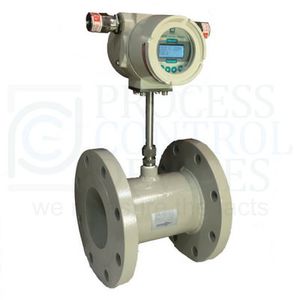
- Detection - Measurement
- Flow, Pressure and Level Measurements
- Thermal mass flow meter
- Process Control Devices
- Products
- Catalogs
- News & Trends
- Exhibitions
Thermal mass flow meter for compressed air4-20 mAindustrial



Add to favorites
Compare this product
Characteristics
- Technology
- thermal mass
- Fluid
- for compressed air
- Communication
- 4-20 mA
- Applications
- industrial
Description
Thermal Mass Flow Technology for Compressed Air Flow Measurement
The thermal principle operates by observing the cooling effect of a gas flow as it passes over a heated transducer. In compressed air flow meter, the temperature sensor monitors the actual air temperature whilst the heater transducer is maintained a constant differential temperature by caring the required current to the heating sensor from electronic in order to maintain the differential temperature. Greater the flow, greater will be cooling effect and current required to maintain the differential temperature.
The current produce to maintain this temperature differential is directly proportional to the mass flow rate. Hence there is no need for additional temperature or pressure compensation in the thermal mass flow meter. This makes thermal mass flow meters as a preferred choice for use in compressed air flow monitoring systems.
Air is free but Compressed Air is NOT!!!
Compressed air has wide range of applications across Industrial segments. Compressed air is considered to be the “fourth utility” after water, natural gas and electricity. When compared by cost per delivered unit of energy compressed air is costly other than three. There are six basic aspects of efficient compressed dry air system total demand, system storage, operational supply, output air quality, on demand distribution, and overall management. All six elements need to work together for the system to reach its extreme efficiency.
Related Searches
- Flowmeter
- Liquid flowmeter
- Level probe
- Liquid level probe
- Gas flowmeter
- Stainless steel flowmeter
- Industrial flowmeter
- Compact flowmeter
- Level transmitter
- Liquid level transmitter
- Mass flowmeter
- Digital flowmeter
- RS485 flowmeter
- Ultrasonic flowmeter
- Analog level transmitter
- Flange flowmeter
- Variable-area flowmeter
- Liquids level indicator
- Stainless steel level probe
- Flow switch
*Prices are pre-tax. They exclude delivery charges and customs duties and do not include additional charges for installation or activation options. Prices are indicative only and may vary by country, with changes to the cost of raw materials and exchange rates.




